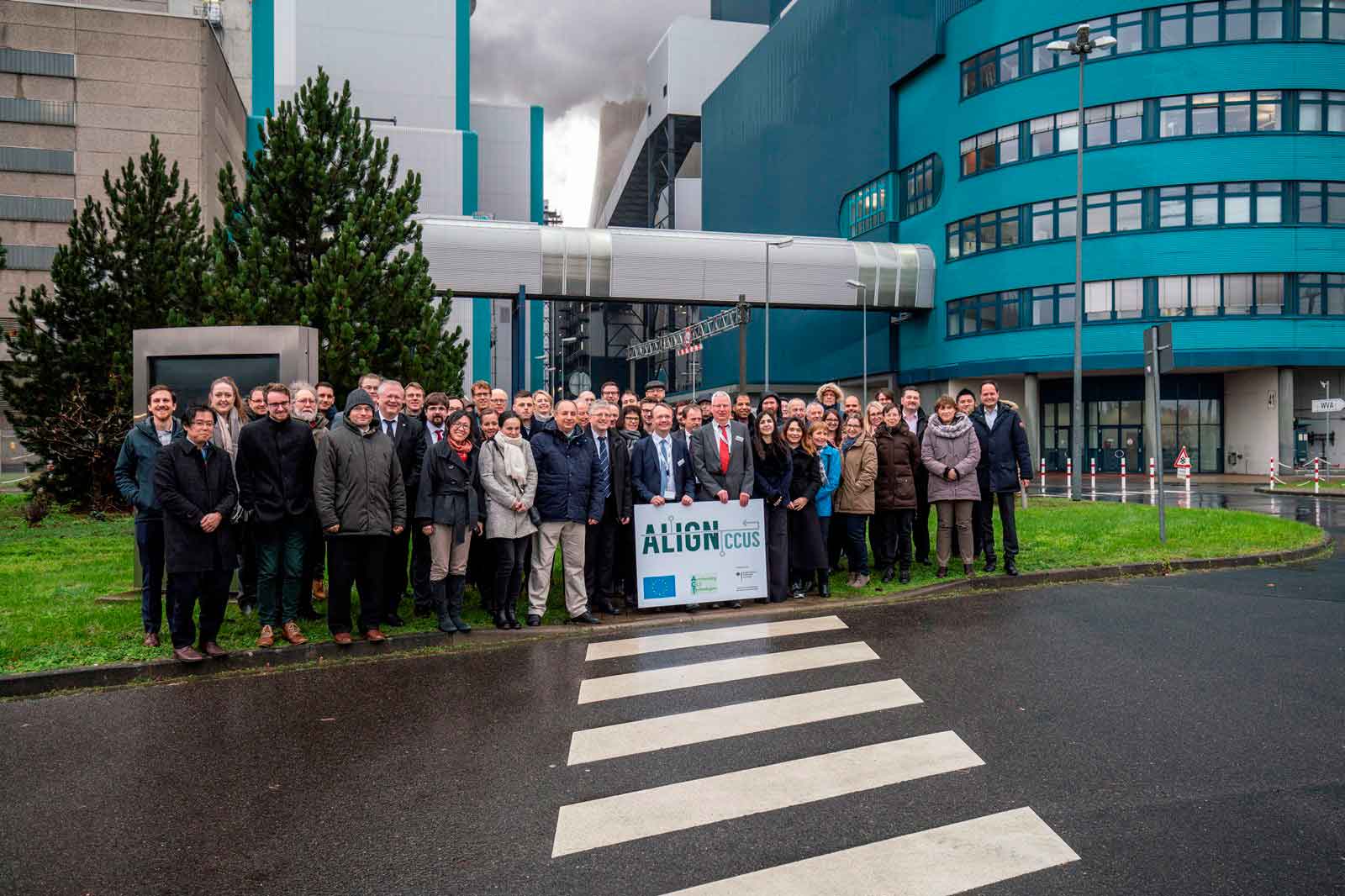RWE to start marketing free capacity in Gronau-Epe hydrogen storage facility
16.06.2025

At RWE Power's innovation centre in Niederaussem, Germany, a Power-to-X research plant that recycles CO2 and produces a synthetic diesel substitute fuel using electricity and water has begun operation: the fuel is called dimethlyether (DME), is characterised by a particularly high energy density and can be refuelled conveniently like LPG.
The DME synthesis plant was developed over the past two years as part of the ALIGN-CCUS project, in which 30 companies and research institutions from five EU countries are collaborating. This week, 80 project participants met at the Innovation Centre to get a first-hand impression of the new facility. Yesterday they continued their working meeting at RWE Power's Cologne headquarters.
The starting product CO2 for the DME synthesis comes from the neighbouring Unit K of the lignite-fired power plant. RWE Power's CO2 scrubbing pilot plant, which has proven its worth since 2009, separates it from a partial stream of power plant flue gases. The second starting product, hydrogen (chemical symbol H2), is obtained from water by electrolysis: up to 22 kilograms per day. Ideally, the necessary electricity comes from renewable energy sources, and locally from the lignite-fired power plant. The new synthesis plant processes CO2 and H2 under high pressure into up to 50 kilograms of DME per day.
Its high energy density makes it interesting for the energy transition in two respects: firstly, as a long-term intermediate storage for electrical energy when there is too much wind and solar power; and secondly, as required, for example at night or when there is no wind, DME can be used again to generate electricity. Also, DME is suitable as a climate-friendly fuel for trucks, ships, aircraft and locomotives that can’t be electrified. If synthetic, low-emission fuels are used, crude oil can be replaced and CO2 saved.
In Niederaussem, DME will be used from spring 2020 in a combustion-adapted diesel generator to generate electricity. Research partners are also preparing an application in a modified car: it will run on the potential fuel OME3-5, which can be produced from DME.
The Niederaussem project is therefore another major Power-to-X project that is researching the use of surplus electricity from renewable energy sources and in which RWE is involved. In Lingen, for example, RWE is involved in the GET H2 initiative. The common goal is the economical, industrial production of green hydrogen and its transport in rededicated natural gas pipelines.
All Power-to-X projects aim to replace fossil fuels with the generated product and thereby save CO2. In doing so, they network the generation of electricity and heat, the mobility sector and the chemical industry. As a result, Power-to-X makes a decisive contribution to the transformation of energy systems and the achievement of international climate targets.
RWE Power operates the globally unique ALIGN-CCUS test facility. ALIGN-CCUS is an important step on the way to building a demonstration plant for cross-sector reduction of greenhouse gases.
"ALIGN-CCUS is an important step on the way to building a demonstration plant for cross-sector reduction of greenhouse gases," stresses Ferdinand Steffen, Head of Environmental Technology & Sector Coupling at RWE Power.
The plant was developed and erected by Mitsubishi Hitachi Power Systems Europe (MHPS), a partner based in Duisburg. "This is one of several technologies we have developed to decarbonise the energy landscape," says Thomas Bohner, CEO of MHPS Europe. "It holds considerable potential for CO2 reduction, not only for power station operators, but also for industrial plants in the future.”
The electrolyser is a product of the Düsseldorf-based project partner Asahi Kasei Europe. Its spokesman Hideki Tsutsumi, Managing Director, emphasised: "This demonstration plant and the interdisciplinary co-ordination are another important contribution to the realisation of low-emission mobility and ultimately to a 'green' hydrogen society."
From North Rhine-Westphalia, Aachen's FEV Europe, a company specialising in drive technologies, RWTH Aachen University and Forschungszentrum Jülich are involved in ALIGN-CCUS. The abbreviation ALIGN-CCUS stands for: Accelerating Low Carbon Industrial Growth through Carbon Capture, Usage and Storage. The project has been running since August 2017 and is scheduled to run for three years. The research project is funded by the European Union and the Federal Ministry of Economics, among others.